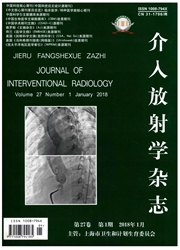

 中文摘要:
中文摘要:
目的 系统回顾近年文献中升主动脉根部测量数据结果、影响因素及方法等。方法 分别对升主动脉、主动脉窦部、冠状动脉开口处的测量数据进行整理分析,比较不同检查方法和测量手段。结果 共收集纳入21篇相关文献数据,测量结果表明升主动脉根部直径变化区间为(24.3±3.1)~(34.0±5.0) mm,主动脉窦直径变化区间为(29.0±4.0)~(34.0±3.0) mm;窦管结合部直径变化区间为(25.4±5.2)~(30.5±3.2) mm。比较国人与欧美人升主动脉根部直径、升主动脉中段直径、主动脉窦直径测量数据发现,欧美人有大于国人趋势。结论 尽管腔内血管修复术的应用日益普及,但受自然解剖结构的限制,升主动脉根部一直被视为腔内血管修复术禁区,相应支架移植物有待进一步发展。因此通过准确、便利方法进一步了解升主动脉根部数据已成为研究热点,将为研制开发新型、适合人体生理解剖的支架移植物提供有力依据。
 英文摘要:
英文摘要:
Objective To systematically review the measurement results, influencing factors and methods of the ascending aortic root reported in recent literature. Methods The measured data of the ascending aortic root, the aortic sinus and the coronary artery orifices were analyzed. The different examination means and measurement methods were compared. Results A total of 21 related literature data were enrolled in this analysis. The analysis of the measurement results revealed that the change interval of the aortic root diameter was (24.3±3.1)-(34.0±5.0) mm, the change interval of the aortic sinus was (29.0±4.0)- (34.0 ±3.0) mm, and the change interval of sino - tubular junction was (25.4 ±5.2) - (30.5 ±3.2) mm. The measured data of the ascending aortic root diameter, the diameter of middle segment of ascending aorta and the diameter of aortic sinus in European and American people were larger than those in Chinese people. Conclusion Although endovascular repair is becoming more and more popular in clinical practice, its application is still limited by the natural anatomical structure because the ascending aortic root has been considered to be a forbidden area for endovascular repair and the corresponding stent graft needs to be further studied and developed. Therefore, the accurate and convenient imaging method to obtain the ascending aortic root data has become a hot research topic, which will provide a strong basis for the development of the new type of stent graft suitable for the physiological anatomy of human body.
 同期刊论文项目
同期刊论文项目
 同项目期刊论文
同项目期刊论文
 期刊信息
期刊信息
